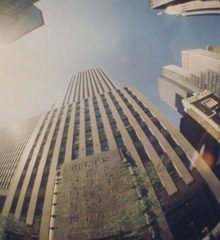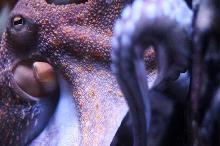Over the past two years ‘aemi’ (www.aemi.ie) has been exploring the potential meeting points between visual art and film. In 2019 ‘aemi’ is touring two exciting programmes of artists’ cinema to six arts venues & cinemas across Ireland. These programmes offer the chance to see what happens when artists are free to create a truly personal and independent cinema that shifts our understanding of what the medium can be and do. These events will be focused around the work of two internationally celebrated Irish artists working with film – Vivienne Dick & Sarah Browne. The artists will be in attendance for several of these events which feature curated programmes of short film works followed by a Q&A with the artists or with representatives from aemi. These two screening events both promise to be a compelling introduction to the world of artists’ cinema.
For more information see https://aemi.ie/touring-programmes-2019/
– What can audiences expect from ‘Delirious Rhythm 1936-2017: Films selected by Vivienne Dick’?
Audiences can expect a wide range of short film works personally chosen by one of Ireland’s most internationally renowned artists, Vivienne Dick. These films capture and express the same musicality and energy that define Vivienne’s own films, two of which are included in the programme. This exceptional screening programme takes us from the street and the city to more interior, internal and domestic spaces and Vivienne Dick or an aemi speaker will be on hand to guide us through them.
-What title from the programme really stands out for you in ‘Delirious Rhythm’ and why?
One of the standout titles in Vivienne Dick’s ‘Delirious Rhythm’ screening is also one of the oldest. In The Street (1948) made by Janice Leob, James Agee and photographer Helen Levitt is a masterpiece of observation capturing a day in the life of New York’s Spanish Harlem and the joyful, mischievous children that inhabit it. With a jazz piano soundtrack by Arthur Kleiner this film is a rare and very special treat.
-What can audiences expect from ‘To train the whole body as a tongue’ curated by Sarah Browne?
‘To train the whole body as a tongue’ is a fascinating group of short film works that artist Sarah Browne has selected to show around her own extraordinary film, Report to an Academy which is an adaptation of a Franz Kafka short story of the same name. The protagonist in Sarah’s film has transformed herself into an octopus as a way of escaping an oppressive work environment and the film details how and why she reached this decision. The films in Sarah’s highly intelligent programme are all about characters who are living under different kinds of constraints. These characters often address the audience directly in order to effectively communicate the reality of their experiences.
-What title from the programme really stands out for you in ‘To train the whole body as a tongue’ and why?
As well as Sarah’s own deeply powerful film – Report to an Academy – another highlight in this excellent programme is a short, often comic film called Pedagogue (1988) in which the performing artist Neil Bartlett plays a gay lecturer whose wry attempt to go back ‘into the closet’ is betrayed by the contents of his briefcase. This film was made to address Clause 28 through which the British Government took steps in 1988 to outlaw the ‘promotion of homosexuality’ in education and local government. This clause was only fully repealed in 2003.
– Tell us a little about Vivienne Dick and Sarah Browne?
Vivienne Dick has been making films since the 1970s when she first picked up a Super 8 camera in New York and started making films with her friends in the emerging punk scene. Although born in Donegal, the energy and dynamism of Vivienne’s early films could, it seems, have only occurred in New York in the 1970s. Vivienne is now an internationally celebrated artist whose work with the moving image has been truly groundbreaking. Working outside the structure and confines of traditional filmmaking, Vivienne has continuously pushed the boundaries of what is possible to do in cinema. A recent retrospective at IMMA placed Vivienne’s legacy in conversation with that of the legendary photographer Nan Goldin (the two artists have worked together several times, with Vivienne featuring in several of Nan’s more well known works). Nan Goldin has been justly celebrated for taking as her subject those that exist on the periphery of life, those that may well fall through the cracks, and Vivienne’s work can be understood similarly. The films included in
‘Delirious Rhythm’, including two of Vivienne’s own works, have a unique vibrancy. They are out of step with ‘normal’ patterns and ways of seeing and are all the more alive because of it.
Sarah Browne is an artist based in Ireland whose practice involves sculpture, writing and performance as well as film. Browne co-represented Ireland at the 53rd Venice Biennale with Gareth Kennedy and her highly revered work has been shown widely both in Ireland and abroad. In 2016 she worked closely with artist Jesse Jones to produce ‘In the Shadow of the State’, a project that investigated how female bodies are subjected to the ‘touch’ of the law. For this project Sarah & Jesse collaborated with women who work in law, music, material culture and midwifery. The extraordinary programme Sarah has put together for the ‘aemi’ tour is centred around her own film Report to an Academy which is a powerful adaptation of the Franz Kafka story of the same name. This film follows a character who transforms herself into an octopus in order to find a ‘way out’ of the repressive environment where she works in which she can no longer express herself. Many of the films in Sarah’s programme feature a single protagonist who is working to negotiate institutions of education, illness and beauty, ‘pushing’, as Sarah describes, ‘at the limits of our sense of the possible and what bodies can (or should) do.’


